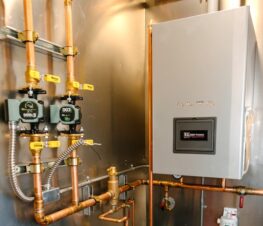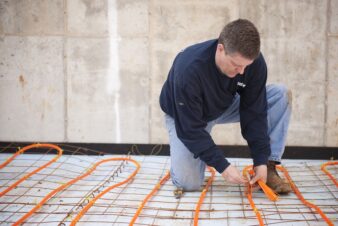Presentation Manual – Today’s Essential Tool for In-home Sales
Why do we need a presentation manual? Many ask that question, they believe that it is a tool the “hard closers” use to win the war in sales. I don’t think it is a war, we sell our goods and services when the customer sees value in what we bring to the table. Some people learn audibly, when you tell them something, they internalize it. Some are visual, they must see it to believe it. Some are experiential, they must put their hands on it. So I would have all three types covered, tell them, show them, and put something in their hands.
What is the purpose of a presentation manual? To validate (Validate: to declare or make legally valid, to give an official sanction, to establish the soundness of.)
three things: the company, the products, and ourselves. We must show that the company is the right company to do the customer’s work, that the products will do what is needed in their home, and that we will do what we said we would do, and have the necessary competence to do what is needed.
Here are the elements needed in a presentation manual. Section one:
1. To validate the company, we need a company resume. It will show how we are different. We train our employees, we have been in business for ___ years.
(just a side bar, even if you have been in business for 6 months, let the customer know how much combined experience your entire company has. Total up all the years all of your employees have in the industry, that is your total experience.)
We are licensed, bonded insured. Show all licenses, current insurance certificates, show awards received. In fact, answer the phone, Hinshaw heating and cooling, 2003 Fort Collins contractor of the year winner, how can we help you? It shows that you are unique, and special.
2. Web site, FaceBook business page, all the social marketing. You do need a business FB page, not your personal page. Show how you are connected to the community, use your FB page to show your support for community projects in addition to how you market your business.
3. Training. Show the customer the money you spent last year on training. It may be staggering, after you consider how much labor you pay for the employees to attend training, and how much you are giving up in lost revenue. Show a total amount, and let the customer know, that you simply cannot afford not to train your employees.
4. Awards given to company and employees. Show the industry awards that you have received, as well as the certificates for the employees. Not everyone will earn them, less will show the customer each certificate. So you do to eliminate some more of the competition.
5. Value of our installation. Show the studies that indicate how few of these systems actually go in correctly. They are found on the internet, or attend one of our training programs, you get several studies there. Show the customer the small percentage (10% or less) of the systems that are installed correctly. Then show them your installation checklist, start-up log, or whatever paperwork you have when you complete an installation. If you don’t have an installation check-list, put one together today. Use it, and show it to the customer.
6. Problems are not solved by equipment alone. We must find more than just a new box to solve the comfort needs of our customers. Instant hot water, unlimited hot water, steam showers, all can enhance our lives. What is the difference between a $20 faucet, and a $200 faucet. Emotion. I am building a new home, I understand fully how emotional it gets when picking out plumbing, some arguments I will not win, so I just accept it. On the heating/air conditioning side grills, registers, air flow, sound, IAQ, energy savings, and lots more need to be considered to bring real comfort to the consumer. So ask the questions to discover what they need, then show them a package that includes that in their installation. Have a set of packages to illustrate what may be needed, more than just a new hot water heater, furnace or A/C.
7. Literature. We do not do a good job in our industry with literature. Show the customer the brochure for your products, and then show them how they will get the comfort they wanted right on the brochure. If sound was a big deal, show them the features that prove it is a quiet unit. Unlimited hot water, show how you can provide that with this new system.
8. Accessory literature, like the equipment. Show the client how they can change the comfort in their home with these accessories. Don’t assume they will not take advantage of the full package, let them make that decision.
9. Manufacturer’s warranty literature. Show the customer how the products they are looking at are protected by a superior manufacturer’s warranty.
10. Your warranty. Extend the warranty on the items you install for the same length of time as the manufacturer’s warranty. Everything. No small print. Include a note that says the one thing that allows you to include this excellent warranty is a maintenance agreement, all they need to do to keep the warranty in effect is to renew the maintenance agreement each year.
11. Your maintenance agreement. Include a one year agreement with each installation, and show them a sample in the manual. Include a brochure on why it makes sense to have a maintenance agreement, all the reasons.
12. Energy savings calculation. Include an estimated energy savings calculation in your manual. It should be part of the package, but not the major reason. Energy savings are affected by weather, cost of utilities, and most importantly, how they run the system. Include it, but explain why it is an estimate. We can save them the cost of heating the water, perhaps even save them on water consumption. Give examples and have testimonies to review.
13. Financing. Show how affordable these systems are, “starting at $73 per month”. Offer financing on every job. Every one. Even your friends. Do not suppose that they need it or don’t just offer it. Get more than one financing program put together, one for the C and D credit challenged family. There are more of them out there now then ever before, but they have a right to be comfortable too.
14. Pyramid of power. Show how they cannot get what you offer anywhere else on the planet. Your package includes: the company, your installation, the perfect product for them, and you. Show how it is not possible to duplicate that at another contractor.
15. Our promise to you. A letter that says your home is as important to you as our installation is to us, and we will treat it with respect. We will be there when we said we would, and spend the amount of time needed to do the job correctly. And we’ll clean up. Completely.
So there you have it, an outline for a presentation manual. This is just a rough template, not meant to be the final version. It must be customized for your company, for your employees, for yourself. Please don’t call it a pitch book, that is demeaning. Call it a presentation manual, and use it on each sales call. You may not need it all, but better to have some items you didn’t need than to not have something that will be needed. Thanks for listening, we’ll talk later.
Upon graduating from the University of Missouri at Rolla, Jim started his career with the Trane Co. After several sales positions, he moved to Phoenix, where as manager of Trane’s residential division, he enjoyed a 50% market penetration. Jim’s background includes positions as President of one of the oldest and largest air conditioning companies in Arizona, residential start-up specialist for the Carrier Corporation, and an officer in a Carrier owned service agency.
For nine years Jim served as Vice President of a 23 year old residential and light commercial service and replacement company, running their sales and installation division. During his time there, his division grew 300%, replacement sales topped $3,000,000 per year, and company closure rate exceeded 60%. So how good is Jim? Even though Jim’s price was always 10% to 50% higher than his competition, his closing ratio on replacement systems averaged a phenomenal 80%! He enjoys training sales, technical, and management team members with companies that want to increase profits and grow to the next level.
Jim has provided high-results training for clients from Calgary, Canada to Adelaide, Australia. Jim retired from the contracting business in 1999 when he formed his own training company, Sales Improvement Professionals, dedicated to bringing his real-world experience to help enhance your sales and marketing efforts. He offers many seminars for sales and management teams, as well as Basic Business Boot Camp, a three day program designed to discover what a company needs to charge to cover overhead and make a profit.
He may be reached at:
Sales Improvement Professionals, Inc
1281 E. Magnolia, #D-145 Fort Collins, CO 80524
Ph: 970-482-5622 jimhinshaw@siptraining.com www.siptraining.com




Join the conversation: